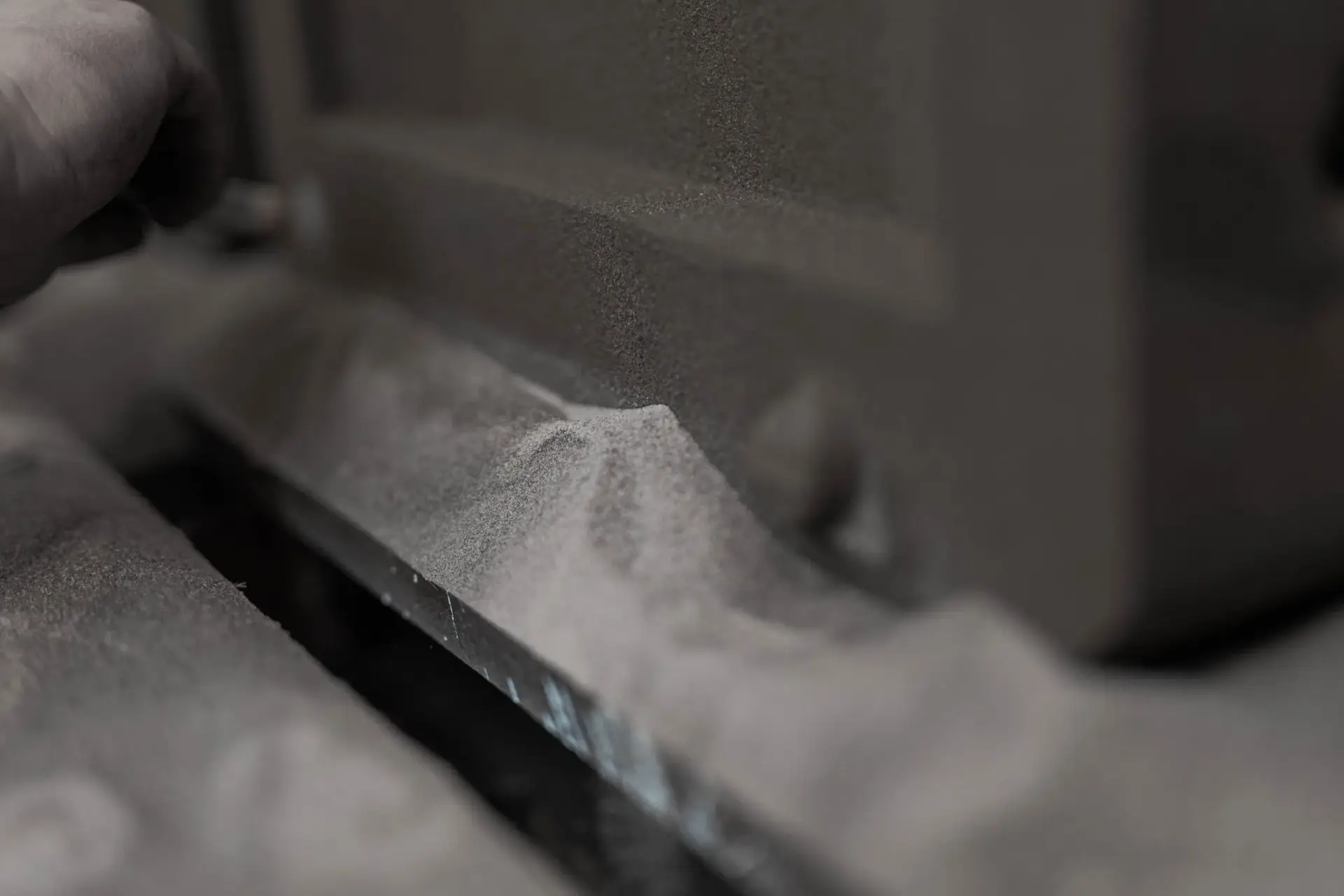
Fast Manufacturing metal components without tooling or welding? Designers like to use metal 3D printing for functional prototypes and one-off parts. With “Printed Casting” it works the same way, with a bonus. Here, the CASTFAST team briefly explains the differences and advantages of 3D sand printing.
Additive manufacturing processes offer great design freedom, flexibility and negligible lead times. Perfect if you want to have prototypes or complex one-off parts produced quickly and easily.
If functional prototypes of metallic components are to be produced from metal for testing, metal 3D printing has so far been available as a fast production method (in addition to milling and welded constructions for simpler component geometries). With the 3D sand printing a third method has been added. 3D sand printing (or “printed casting”) is a hybrid process that combines many of the advantages of 3D printing with traditional casting.
The metal 3D printing process most frequently used for prototypes, selective laser sintering selective laser sintering (SLS or SLM for Selective Laser Melting), builds the component from a metal powder bed in which powder is selectively melted layer by layer using a laser.
In 3D sand printing, it is not the component that is printed, but the sand mold for traditional casting in the foundry. This is done using a binder jetting process in which the mold is built up from a bed of sand by selectively applying a binder (usually furan resin). The printing processes are therefore similar. The advantage of building up the mold from a powder bed over other additive processes is that the powder/sand bed provides the support structure, which is why no separate supports have to be “printed” and removed later.
Other similarities are the enormous freedom of design and the speed and flexibility associated with the tool-free process. Functional integration, bionic shapes, topology optimization, rapid iteration of design variations – almost everything is possible and delights development teams. However, there are also crucial differences that designers can skillfully exploit.
With 3D sand printing, only the mold production is unconventional. The resulting part does not differ in its properties from a traditionally patterned cast part (except possibly in the fact that its complex geometry could not be produced with the limitations of the patterning process). Metal 3D printed parts, on the other hand, have very specific mechanical properties, which we understand better and better, but which are often very different from cast materials.
So if the later component is to be produced as a cast part – due to the mechanical properties of cast materials (such as vibration damping in iron casting) or for economic reasons – then it can be advantageous to produce functional prototypes as cast parts.
The choice of materials for casting is generally greater and also includes familiar materials for which good data and experience are available. Anything that can be cast in sand molds is possible here.
Another advantage of 3D sand printing is that the molds can be cast by different suppliers. For example, one could imagine that a component designed as an aluminium part for weight reasons is first cast in a printed sand mould at an aluminium foundry and then, after a quick topology optimization for comparison, is also manufactured with 3D sand printing at another supplier in iron casting.
Although the selection of metal powders/materials for SLS is constantly increasing, it is limited compared to the variety of casting materials and special alloys. Of course, metal 3D printing can switch between materials just as easily as 3D sand printing (possibly even with the same supplier).
Another advantage of 3D sand printing is that even quite large castings can be produced. Sand molds are routinely printed in several parts in order to create molds that exceed the installation space of the 3D sand printer. The resulting part is nevertheless made from a single casting.
With metal 3D printing, the installation space of the printer cannot usually be exceeded. Large parts are also produced very slowly in the metal 3D printer and are several orders of magnitude more expensive than 3D sand printing.
Last but not least, 3D sand printing is an excellent bridge from prototypes to series production. Not only because the properties of the prototype produced in this way are immediately closer to the real component, but also because 3D sand printing is also ideal for start-up series and can even be economical as a final production process for small series.
In the case of start-up series, production can already begin thanks to 3D sand printing, while the models are still being built for volume production.
3D sand printing combines the advantages of additive manufacturing with familiar materials. This has a decisive advantage for prototype production: it combines design freedom and flexibility with realism – for more efficient product development.
However, the advantages of 3D sand printing go far beyond the prototype phase. Even for complex, sophisticated final components that could previously only be printed directly, the following now applies: if casting is required, it can also be produced without a model, without endless lead times, but with precision, design freedom and flexibility.
Prototype in development? Just try 3D sand printing. Click here for the Instant price display.
© 2025 All Rights Reserved.